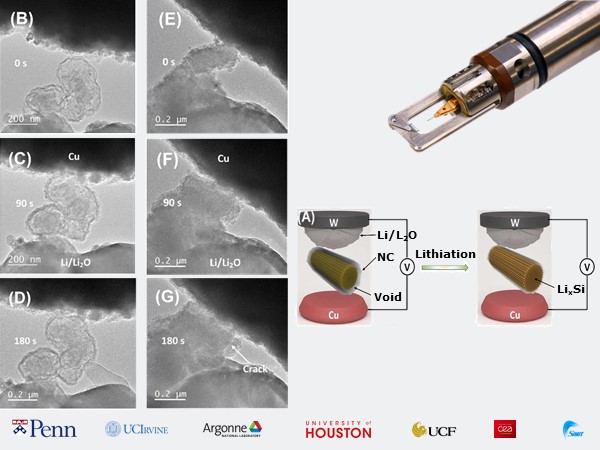Hummingbird Scientific’s in-situ nano-manipulator probe can selectively charge or discharge individual nanomaterials such as nanowires and nanoparticles. This is a great tool for studying mechanics and kinetics of individual nanostructures, while allowing to manipulate and characterize their behavior in real-time. The piezo-driven probe carries the charge source (e.g. Li, Na, Mg or ionic liquid electrolyte). The sample containing TEM specimen is mounted to the fixed stage. A negative/positive bias is applied to the sample with respect to the probe source to initiate the reaction and study site-specific connections between material microstructure and performance.
The image on the left shows the lithiation/delithiation behavior of porous silicon nanorods, in which the void space allows free volumetric expansion during lithium intercalation and deintercalation processes.
Reference: Z. Yang, J. Sun, Y. Nia, Z. Zhao, J. Bao, S. Chen. “Facile synthesis and in situ transmission electron microscopy investigation of a highly stable Sb2Te3/C nanocomposite for sodium-ion batteries,” Energy Storage Materials 9 (2017) pp. 214-220. Abstract
Copyright © 2017 American Chemical Society

